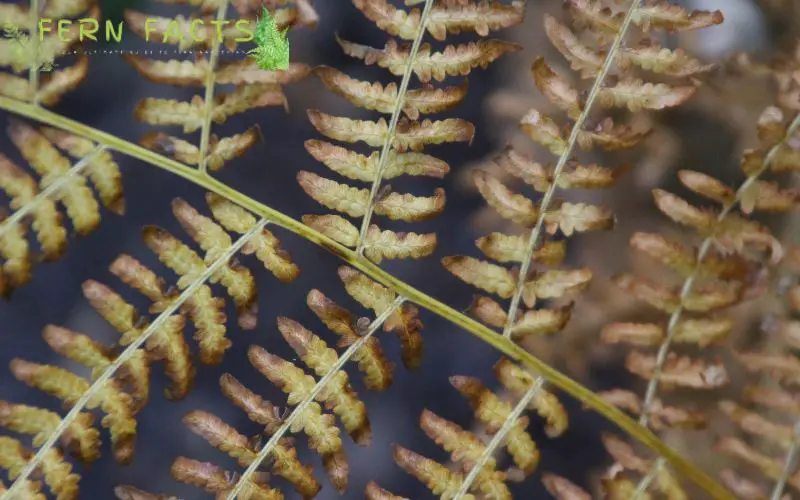How to Revive Black Fronds on Boston Ferns
Are your Boston ferns getting black? Don’t know how to revive them, so read this article properly. In this article, I’ll talk about how you can revive the black fronds of your Boston ferns.
Before that, I’ll provide you with an overall idea about Boston fern’s characteristics. Later on, I’ll illustrate the reason behind your Boston fern’s black fronds.
Lastly, I’ll conclude the article by giving you guidelines for reviving your Boston ferns. So let’s start the process.
Overview of Boston Fern
- Botanical name: Nephrolepis exaltata
- Common names: sword fern, bluebell Fern, tuber ladder Fern, Fishbone Fern
- Plants: Evergreen
- Native range: America
- Native habitats: moist shady locations like humid forests, swamps, and floodplains
- Shade requirements: partial shade or full shade
- Height: 20 to 98 inches
- Soil pH: acidic soil (6.0 to 6.5)
- Soil type: moist well-drained, drought-tolerant
Boston Ferns are perennial evergreen ferns that are widely native to America. These ferns are also recognized as sword fern or blue bell Fern, tuber ladder Fern, or fishbone Fern in many local regions.
Their average height is around 40 to 60 centimeters however, in rare conditions, they can exceed up to 1.5 meters also. Likewise other ferns, Boston ferns are also fond of moist shady places just like their natural habitats.
Nonetheless, they can tolerate drought but not for too long. They need 70 to 80% humidity around themselves for their flourishing growth.
Reason for Boston Ferns Turning Black
Let’s find out the reasons why your Boston ferns turning black
Natural Aging of Fronds
Well, the first possibility might be, that your Boston ferns have natural ages that’s why the fronds are getting brown to black.
It’s an indication of your fern’s healthy thriving growth because those fronds will naturally die and again grow back during their growing season.
So don’t be worried about their natural aging process.
Presence of Nematodes
Nematodes are a kind of insect or worm that has a round shape. These round-shaped worms usually live inside the soil surface. They tend to attack on the roots of Boston ferns.
Because of their attack, the soil starts losing its rich consistency. They lose nutrients to the soil and also lose to suck out excessive water from it.
Ultimately, soil loses its nutrients and proponents. So if you observe any black fronds or spots on your fronds, then there might be a possibility to have Nematode impossibility that’s soil.
Bacterial Root Rot
It’s a very common issue for most of the ferns. Like other ferns, Boston ferns also get bacterial infection from several fungi, bacteria like Pythium roots rot is one of the common diseases of these ferns.
If they get affected by this disease, their fronds will start decaying soon and will lead your ferns to have black fronds very quickly.
Lack of Basic Requirements
One of the primary conditions is to provide them with their ideal living atmosphere such as lighting, watering, humidity, and temperatures.
Since Boston fern thrives in dappled shade under indirect sunlight with moist, damp soil and a humid atmosphere. If any of these components are lacking, your Boston fern will have an interruption in its growing phase.
So make sure you are providing them with their ideal condition to thrive.
Pests Problems
Boston ferns are very sensitive toward mealybugs, scales, snails, caterpillars, spider mites, etc. So these pests can cause your fern fronds to have black spots as well.
Sometimes, these pests take the moisture from the fronds and make them dull brown and dehydrated. Ultimately, fronds start to turn black.
How to Revive Black Fronds of Boston Ferns
To treat or revive your Boston ferns’ black fronds, you first have to identify their problem. After pointing out the reasons, you can start the reviving process.
Treating Nematodes
To reduce Nematodes from the soil, you need to prepare rich soil for your Boston ferns. If you are sure that, Nematodes are causing problems for your Boston ferns then immediately change the soil and repot your ferns to a different pot or container.
Prepare the soil with lots of compost and organic matter so that the soil doesn’t lose its rich nutrients. Rich will be able to provide nutrients to the roots and also drain out the excessive water from the soil.
Pests Treatment
If your ferns are infected by pests, then immediately treat them with chemical pesticides that are available near your house.
Firstly, rinse the plant with water so that any pests can be removed by the water force. Then, lots of chemicals are available in the supershop like insecticidal soaps and pesticides.
You can use those as per the given instructions on the packages. Alternatively, you can use an organic treatment like neem oil and spray it on the plant. It will also help to reduce pests from your Boston plants.
Bacterial Diseases Treatment
Equally for treating diseases, just cut off or trim the infected part of the plant. Then apply fungicides that are available in nearby shops.
Apply fungicides while following all the label’s instructions. Don’t keep the soil wet or give excessive water because it can cause Victorian root rot of your plant.
Basic Requirements of Boston Ferns
After all these treatments, get back to the normal caring requirements of your Boston fern.
- Try to give them dappled shade and indirect sunlight.
- Keep their soil damp and moist; don’t overwater their soil.
- These fern enjoy humidity so try to increase the humidity around your plants by spraying or by using a humidifier or pebble tray.
- Apply fertilizer during their growing seasons because it will boost their growth.
- Prune them occasionally.
By following all these guidelines, you will be able to revive your Boston plant and have a healthy thriving fern.
Recap
Boston ferns are evergreen plants that are very elegant for any plant enthusiast. However, these ferns get very vulnerable if they don’t get their ideal conditions.
Hence, you’ll notice your fern fronds are getting black because of many reasons like Nematode infection, bacterial root rot, and pest problems.
However, black forms are also another process of their natural aging. So in such cases, it’s an indication of healthy growing ferns.
Nevertheless, if you notice any other symptoms, then immediately start your reviving process. Identify the problems and start treating them accordingly.
By following the above-mentioned guidelines, you will be able to revive your Boston fern’s black fronds.







